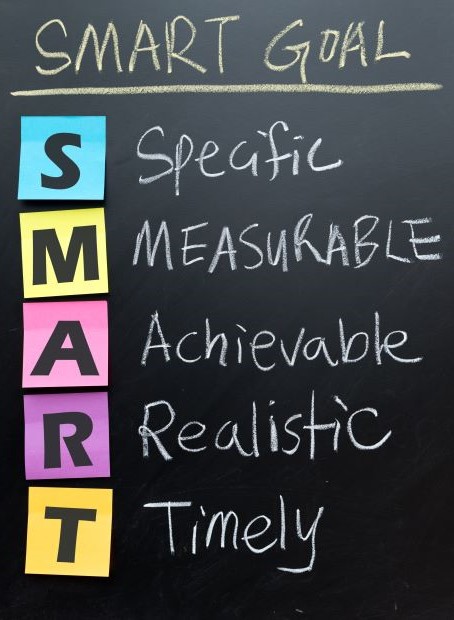MEMBER EXCLUSIVE: Develop Your Gameplan
Esports Training – Goal Templates for Esports Athletes
Esports Tower athletes to go above and beyond using our Esports Tower Approach™.
This flexible coaching program is designed to match the needs of each individual and team — and adapt as those needs change. In our Premium Training Programs, we start by assessing gamers’ in-game skills and then match players to a team that will challenge them to game greater.
Upon joining a club, players work to create a personalized improvement plan. Starting with setting S.M.A.R.T. Goals.
What Is a Goal?
A goal is generally defined as something that an individual or group is trying to achieve. Such as winning more tournaments or securing an esports scholarship so I can play at college. People often set goals within a specific time frame so there is a deadline for completion. Both short- and long-term goals may need to be broken down into a set of tasks — doing so essentially turns one goal into several mini-goals. These tasks, or action steps designed to work toward a larger goal, are often referred to as objectives.
What Is an Objective?
Objectives are measurable and specific actions that can be taken to achieve an end result. They are often planned and carried out on a shorter-term basis and may be designed to help an individual, group, or organization reach a broader, long-term goal. For example, using an aim training tool to improve your objective of ‘winning more tournaments’.
What Is the Difference Between a Goal and an Objective?
The terms “goal” and” objective” are often used interchangeably and both refer to an aim or desired outcome that a person or group hopes to accomplish. However, goals often point to a larger purpose, a long-term vision, or a less tangible result, whereas objectives tend to be time-limited, measurable actions with tangible outcomes that help push progress toward broader goals.
Example: Goal = Win more tournaments. Objective = Improve my aim so I can win more tournaments.

What Are S.M.A.R.T. Goals?
The S.M.A.R.T. approach to creating goals is a business concept from the 1980s, but it’s a really helpful framework for improving in esports and mapping out your path to go pro.
It describes a method for setting and working toward goals, and the acronym stands for the following:
Specific: Clearly define goals as succinctly as possible.
Measurable: Identify metrics for measuring progress and success.
Achievable: Set realistic goals that can be completed within specific parameters.
Relevant: Ensure that goals are worth pursuing.
Time-Bound: Assign deadlines to goals and related action steps. Want more details on these – check out these definitions of S.M.A.R.T. GOALS for esports athletes.
Using the S.M.A.R.T. framework for setting your gameplan and objectives can help you examine the motivation behind pursuing a certain achievement. It can also help you determine what resources will be required to reach that goal. The S.M.A.R.T. approach breaks down your gameplan into clear steps so that your coach can better understand your motivations and use that in your coaching program. What exactly needs to be accomplished? How will you know when your goal has been reached? What is the timeline, and who is responsible for the different actions required to reach the goal?
S.M.A.R.T. goals help you track your progress over time. This framework shows college and pro team recruiters how serious you are about leveling up your game and the progress you have made. After all everyone starts at the beginning. Using this framework will show scouts how quickly you learn, adapt, and are committed to being the best.

Tips for Setting (and Reaching) Attainable Goals
Here are a few tips to keep in mind as you set goals and create personalized coaching plans for reaching them:
Start Small and Build on Success: Whether you’re trying to simply rank up, win your way into an exclusive tournament or ultimately score scholarships or a seat on a collegiate varsity team, you’ll need to create a plan that starts with steps you can take now. Add benchmarks down the road so you have clear short-term steps to reach your ultimate goal — doing so provides a manageable ladder for you to climb and gives you ongoing gratification as you reach each objective leading to the end goal.
Focus on the Most Important Goal: Dealing with goals that are a few years away or out of your control can feel overwhelming. In any situation, identify the most important goal — this will help you create an effective plan of action and prioritize other goals. You may want to do a lot of things, but what’s the ‘one big thing’ you want to achieve – start there and build a plan to achieve that, then you move on to set your next ‘one big thing’.
Consider Both Lead and Lag Measures: Measuring key indicators is an important part of keeping track of how well and how far your training efforts have come. Both leading and lagging indicators are important measures of success, but they show different things. Simply put, lead measures are measurements that can help you reach a goal, while lag measures are results. The former is predictive, while the latter tells you about a process that is already over. Lagging indicators give results that can be used to measure and analyze progress. However, when planning your goals, it is vital to consider the leading indicators that may improve those outcomes. For example: A leading measure may be (1) practice aim training daily (2) obtaining a 95% hit ratio, whereas the lag measurement may be (1) winning a tournament qualifier, (2) achieving top 3 placement in the next tournament.
Keep Goals in a Visible Place: This is a simple tip that can help you stay on task and keep track of your progress. It could mean making sure the team takes 5 minutes for everyone can share updates on their progress towards their goals. Or, it could just mean posting in your practice channel a reminder of your high-priority tasks that need to be done or long-term goals that your all working toward.
Consider Accountability as a Form of Motivation: Goals for teams can have deadlines and VOD reviews of performance built in to make sure everyone is staying on track. But if you’re working on personal goals, it might help to find a partner to hold you accountable or to let friends/teammates, and family know what you’re trying to achieve.
Other Resources:
Building Your Game Plan – A Roadmap For WINNING MORE in Esports
S.M.A.R.T. GOAL-SETTING WORKSHEET
S.M.A.R.T. Goal Templates → Daily Goals | Esports Career Goals | Life Goals | Esports Goal Setting | Student Goals | Tournament Winning

Get Social